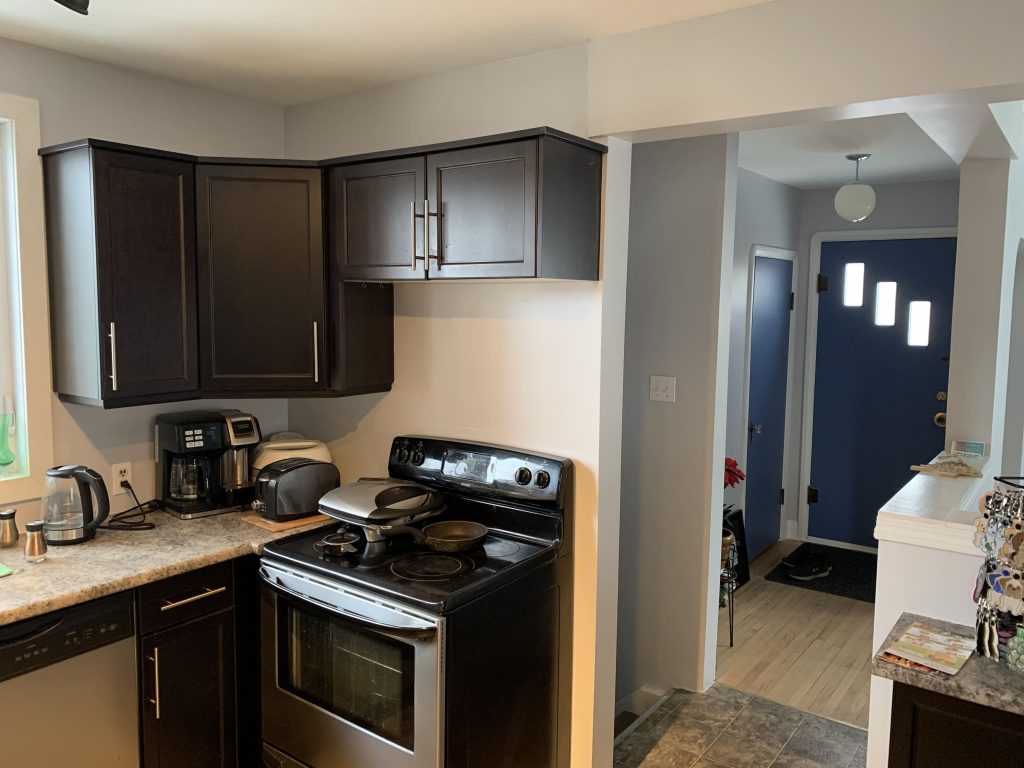21 Jan Tips For Removing Stubborn Wallpaper
 Had enough of your old, outdated wallpaper? Removing wallpaper can be a messy and time-consuming job. Luckily, there are always some hacks around most things in life. These tips will leave your walls smooth and clean, ready for a fresh coat of paint from the top residential painting services in Winnipeg.
Had enough of your old, outdated wallpaper? Removing wallpaper can be a messy and time-consuming job. Luckily, there are always some hacks around most things in life. These tips will leave your walls smooth and clean, ready for a fresh coat of paint from the top residential painting services in Winnipeg.
Using some liquid help
A mixture of hot water and vinegar can aid the process. As the hot water loosens the wallpaper glue, vinegar dissolves it making it easy to scrape off. Take a garden sprayer and fill it with the mixture, then spray the wallpaper until it’s wet and let it soak for 15-20 minutes. Alternatively, you could fill any empty container with the mixture and sponge the wallpaper until it’s wet. Then, using a putty knife, strip the wallpaper. If you don’t have vinegar, you can add fabric softener to water and follow the same process.
Use a wallpaper steamer
A wallpaper steamer is an electrical device that looks like a small canister vacuum cleaner. It boils water continuously so to produce steam. At the end of the hose is a faceplate that releases steam. Holding the faceplate against the wallpaper allows the steam to soften the wallpaper. Once the wallpaper paper paste is well saturated, it really does just peel off, making your work a lot easier.
Liquid wallpaper stripper
DIF Liquid is a fast-acting, ready to use formula popular for wallpaper removal. This liquid concentrate breaks down the enzymes of the wallpaper paste making the process less cumbersome. For wallpapers that cover large areas, you can use the no-drip liquid since it stays wet longer than other variants. To apply, use a roller or a garden-type sprayer and let the liquid soak in for about 15 minutes. Reapply the DIF and wait for another 15 minutes. After this, peeling the wallpaper will easy peasy!
For waterproof wallpapers
Glossy or vinyl wallpapers are typically non-absorbent. This means the methods above may not work unless you find a way of penetrating the solutions into the wallpaper paste. You need to perforate the wallpaper using a scoring tool. The tool punches hundreds of tiny holes in the wallpaper so that the liquids mentioned above can penetrate the backing. The goal here is to soak the wallpaper paste so the wallpaper is easy to just peel off. For this tip, however, you should be careful not to punch holes in the drywall. Although plaster walls are almost impervious to abuse, using a scoring tool aggressively can punch some tiny holes in them as well.
One last tip: in the same way wallpaper is applied in rows, removing one row at a time, and in succession, makes your work easier.
Once you’re done removing all the wallpaper, wash off the remaining pieces and paste before the surface dries. You can use a solution of warm water and household detergent. Fill a pump sprayer with the mixture and spray the walls. Using a scraper knife, remove any residue and wallpaper scraps. If you scarred the walls with the putty knife or the scoring tool during the wallpaper removal process, you’ll probably need some professional help preparing the walls before applying new wallpaper or repainting the surface.
